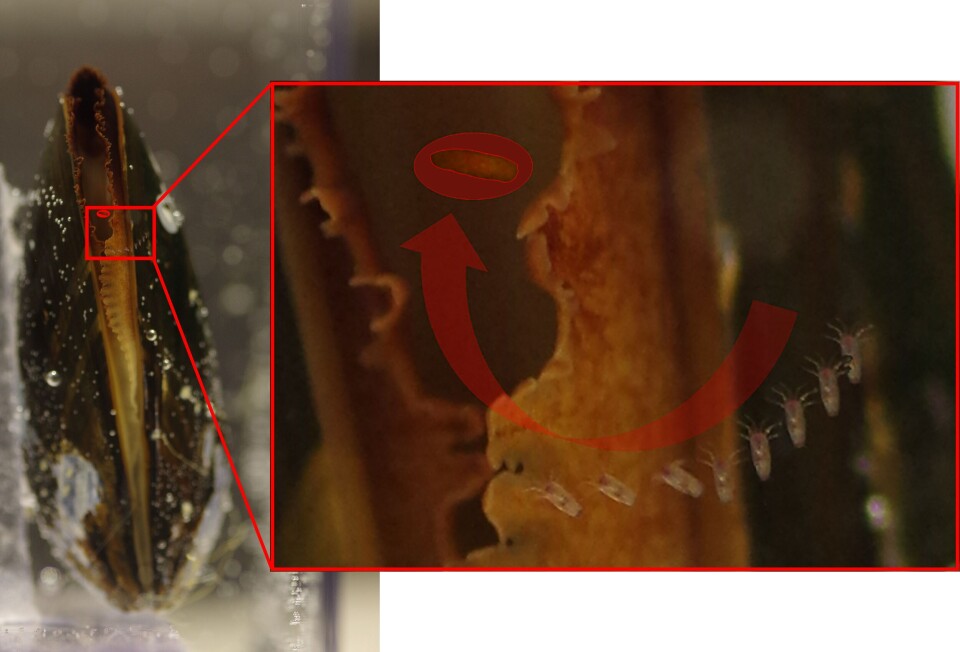
Promising research results using mussels to combat lice
Two students at Norwegian technical university NTNU have carried out experiments they say give them reason to believe that mussels can be used next to salmon farms to reduce sea lice numbers.
Undergraduates Malin Hoem Storholt and Katrine Ranvik Tysse have, with the help of their supervisors Stig Tuene and Lars Gansel, written a thesis at the Department of Biological Sciences at NTNU in Ålesund.
In the assignment, they have attempted to document whether mussels can be used as a controlling measure in the fight against salmon lice.

“The use of mussels as a natural lice filter is no new idea, but to date, little research has been done on the mussel’s appetite for salmon lice larvae. In connection with the work of the assignment, we have researched the ability of the mussels to remove salmon lice from the water masses, and the results look promising,” say the two students.
More nauplii than copepodites
In the experiment they fed the mussels with salmon lice larvae. A total of 75 mussels of different sizes were used. The mussels were each placed in a glass container with filtered sea water, where they were fed with 30 salmon larvae for 30 minutes. Mussels of different sizes were fed with either nauplius larvae or copepodite larvae.
The trials gave promising results. They confirmed that both small and large mussels can ingest salmon lice. The mussels used in the experiments consumed anything from 0 to 29 of the 30 salmon lice larvae they had available. The mussels also caught salmon lice in both the nauplius and copepodite stages, but the consumption of nauplii was 2-3 times as high as the consumption of copepodites. The largest mussels consumed the most salmon lice, but per gram of weight it was the smallest mussels that had the highest intake of salmon scallops, say Storholt and Tysse.
Water flow
The concentration of salmon lice larvae in the experiments (30 per litre) was much higher than the concentrations found naturally in the sea (the order of magnitude 0.1-1 larva per 1000 litres), but the students point out that as long as the mussels are placed where the water flow with salmon lice larvae goes, the mussels will be able to remove a certain proportion of the larvae.
“Due to good results from both previous research and our laboratory experiments, there is reason to believe that mussels can work together with salmon farming to reduce the amount of salmon lice at a fish farm,” they say.
400,000 larvae per day
They point out that more 400,000 nauplius larvae per day can be produced in a large cage.
“Because of the production of so many nauplius larvae in a salmon cage, it would be advisable to place the mussels at the outflow side of the cage,” they say.
“This limits the infection to other plants and wild salmon. In view of the fact that mussels can also remove the infectious copepodites from the water volume, it would be advantageous to place the mussels on the inlet side of the cages to limit the spread of salmon lice.”























































